16 Beautiful Fall Vegetable Garden Design Ideas That Will Make Your Neighbors Jealous!
As the leaves turn golden and the air grows crisp, it’s the perfect time to showcase your gardening skills.
Fall isn’t just about pumpkin spice lattes and cozy sweaters; it can also be the season that transforms your backyard into a stunning vegetable haven.
We’ve rounded up 16 stunning fall vegetable garden design ideas that will not only impress your neighbors but also make your garden the talk of the town.
From colorful rows of root veggies to charming companion planting designs, these ideas will inspire you to create a beautiful and productive fall garden.
Contents
- 1. Layered Beauty: Vertical Gardening
- 2. Raised Garden Beds: A Neat Approach
- 3. Companion Planting for Aesthetic and Function
- 4. Colorful Leafy Greens: A Decorative Staple
- 5. Edible Flower Gardens: Beautiful and Delicious
- 6. Cozy and Functional Paths: Define Your Space
- 7. Harvest-themed Decor: Embrace Autumn
- 8. Container Gardens: Flexibility and Style
- 9. Focal Points: Create a Centerpiece
- 10. Seasonal Succession: Plan for Continuous Harvest
- 11. Luxurious Mulch: Aesthetic and Practical
- 12. Artistic Plant Labels: Adding Personality
- 13. Wildlife-friendly Features: Invite Nature In
- 14. Simple Yet Chic: Minimalist Design
- 15. Upcycled Garden Elements: Creative Recycling
- 16. Seasonal Transition: Preparing for Winter
1. Layered Beauty: Vertical Gardening
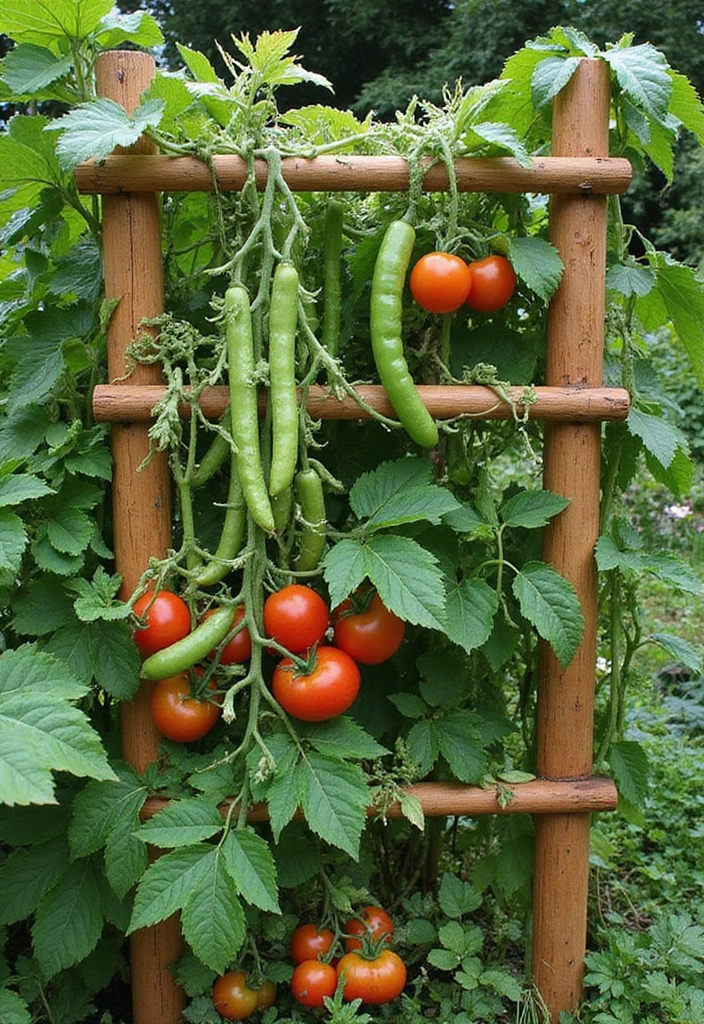
One of the hottest trends in gardening is vertical gardening, and it’s an excellent way to maximize space while adding an artistic flair to your fall vegetable garden.
By utilizing trellises, wall planters, or even repurposed pallets, you can create stunning layers of vegetables like climbing beans, tomatoes, and squash that grow upwards.
This design not only saves space but also provides better air circulation, reducing the risk of fungal diseases.
for vertical gardening:
– Choose sturdy structures to support your plants.
– Use lightweight soil mixtures to avoid heavy lifting.
– Consider companion planting for added aesthetics and pest control.
– Incorporate trailing plants for added visual interest.
A vertical garden will not only stand out but also allow for easy harvesting, making your neighbors green with envy.
2. Raised Garden Beds: A Neat Approach
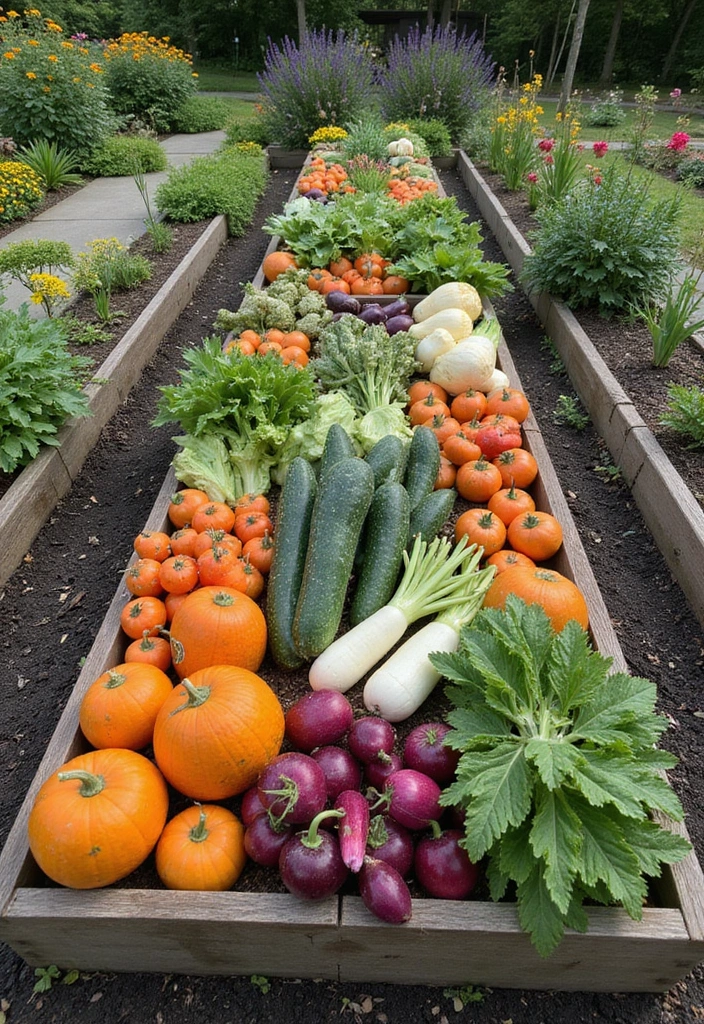
Raised garden beds are not only practical but also add a polished and organized look to your garden.
Creating elevated beds for your fall veggies means better drainage, improved soil quality, and a decrease in pesky weeds.
You can design them in various shapes, such as rectangles, circles, or even geometric patterns, depending on your garden size and style.
Think about incorporating rich soil amendments like compost or leaf mold for a nutrient boost.
for building raised beds:
– Use untreated wood or stone to avoid chemicals leaching into your soil.
– Keep pathways clear for easy access.
– Consider adding a decorative touch with flower borders around beds.
With the right arrangement of colorful vegetables and aesthetics in mind, your raised beds will surely delight.
3. Companion Planting for Aesthetic and Function
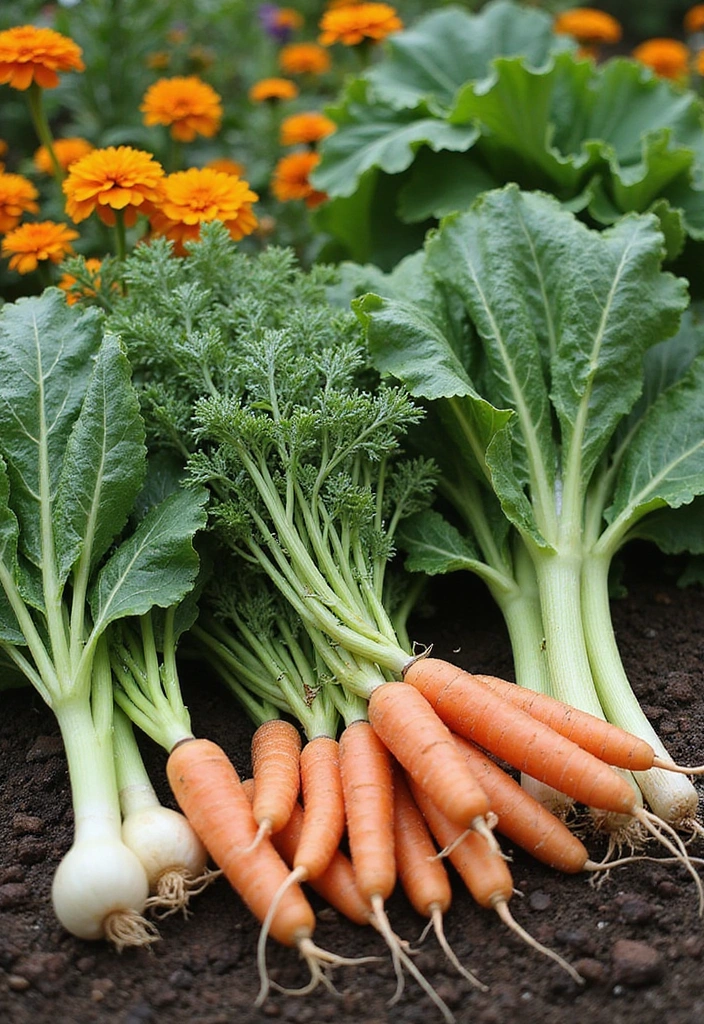
Companion planting is all about pairing up plants that benefit one another while also creating a visually pleasing garden layout.
For your fall vegetable garden, consider pairing carrots with onions; they naturally deter pests. Or how about mixing colorful Swiss chard with bright yellow squash?
Visually, the contrasting colors and textures create an eye-catching display that your neighbors will admire.
Remember to think about height, color, and growth habits to ensure compatibility.
– Use herbs like basil or marigolds to attract beneficial insects.
– Consider plant spacing to avoid overcrowding.
– Include edible flowers like nasturtiums for added beauty.
With thoughtful companion planting, your fall garden can be both functional and fabulous.
4. Colorful Leafy Greens: A Decorative Staple
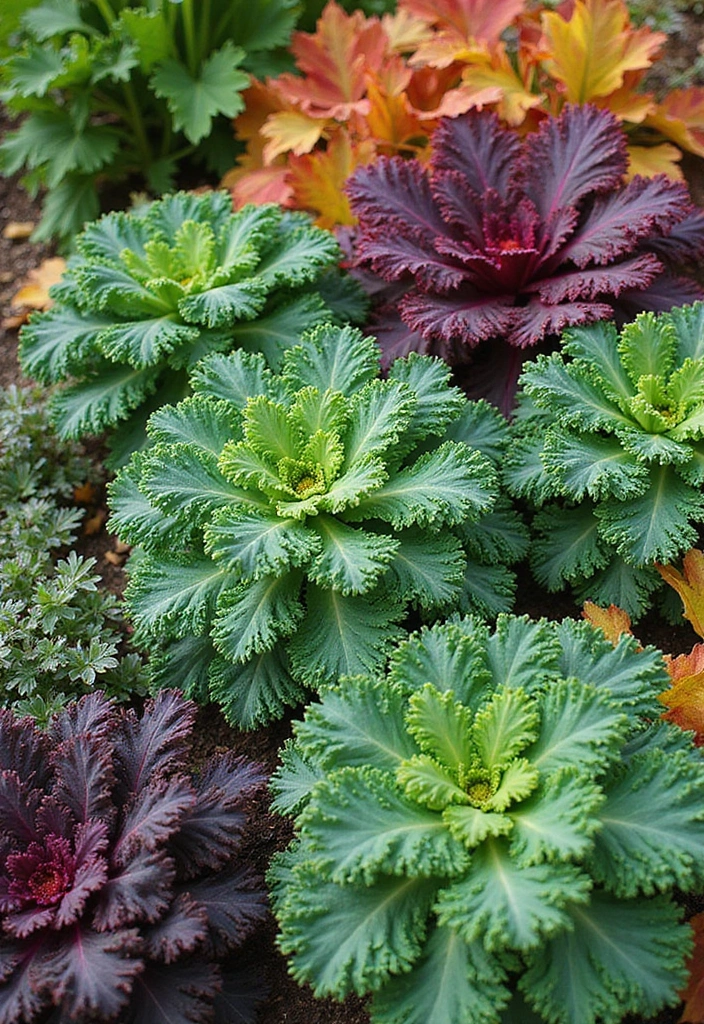
Leafy greens are not just nutritious; they can also add a burst of color to your fall garden.
Varieties like kale, Swiss chard, and even rainbow-colored spinach can provide visual interest alongside their nutritional benefits.
Imagine a patch of deep red, green, and purple leaves contrasting against the backdrop of autumn foliage.
Planting these greens in clusters or alternating with other vegetables can create a stunning tapestry.
– Opt for different varieties for an interesting color palette.
– Plant in groups of odd numbers for natural-looking arrangements.
– Don’t forget to harvest regularly to encourage new growth.
Your neighbors will be jealous of the vibrant display that comes from these leafy beauties!
5. Edible Flower Gardens: Beautiful and Delicious
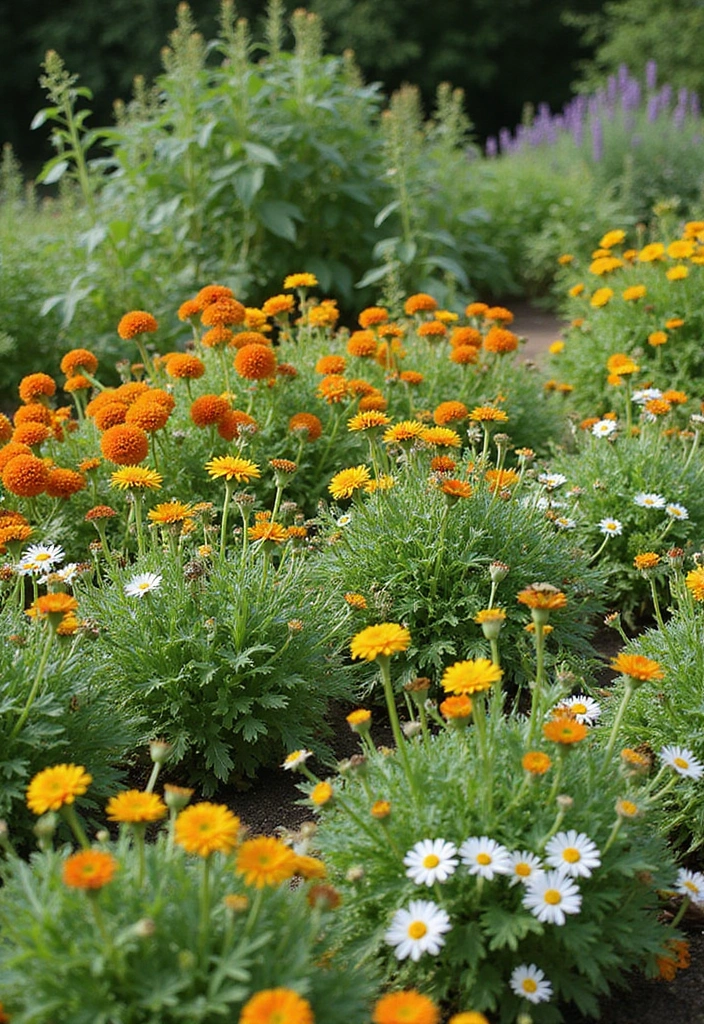
Edible flowers can bring a whimsical touch to your fall vegetable garden design—plus, they’re delicious!
Flowers like nasturtiums, pansies, and calendulas not only add pops of color but also attract pollinators and beneficial insects.
Planting these vibrant blooms alongside your veggies creates a delightful and dynamic visual.
– Use edible flowers to garnish salads or as ingredients in various dishes.
– Mix them in with traditional vegetable rows for a unique twist.
– Create a designated flower bed near your vegetable garden to attract bees.
By incorporating edible flowers, your garden becomes a feast for both the eyes and the palate, making it a sure standout in the neighborhood.
6. Cozy and Functional Paths: Define Your Space
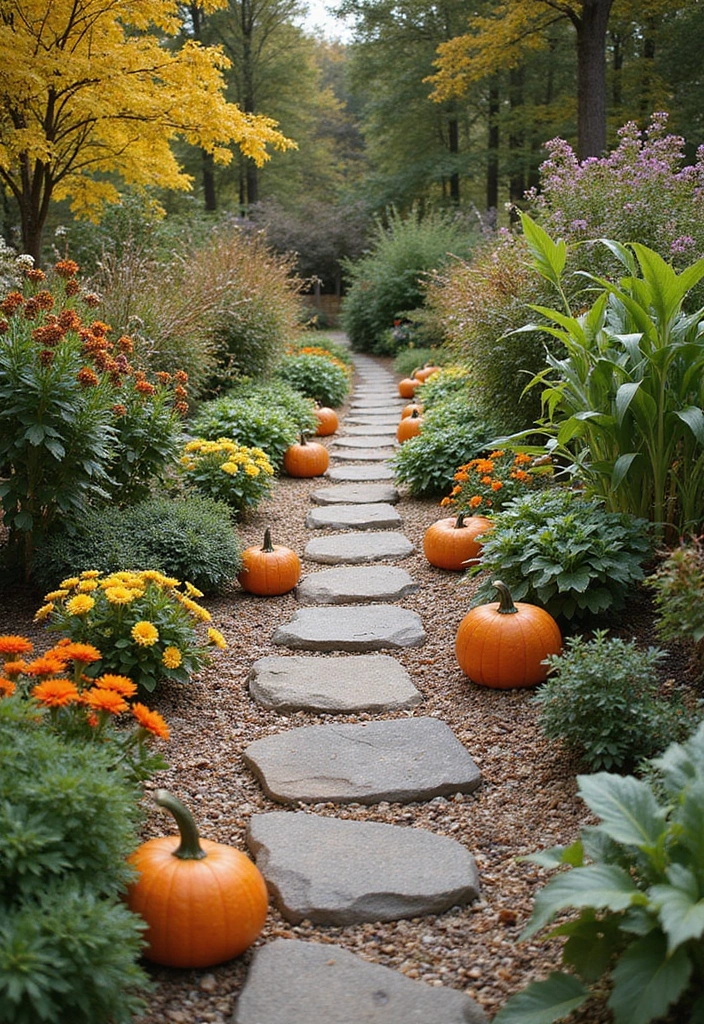
Garden paths are often overlooked but can greatly enhance the aesthetic of your fall vegetable garden.
Creating defined paths using gravel, stepping stones, or mulch can add structure and warmth to your garden, making it feel inviting.
Paths allow for easy access to your plants while preventing soil compaction and ensuring your vegetables thrive.
– Consider using materials that match your garden style, such as rustic stones or modern pavers.
– Edging plants or flowers along the path can create a lovely border.
– Ensure paths are wide enough for wheelbarrows and tools.
A well-designed path doesn’t just serve a functional purpose; it encourages wandering and enjoying the beauty of your garden.
7. Harvest-themed Decor: Embrace Autumn
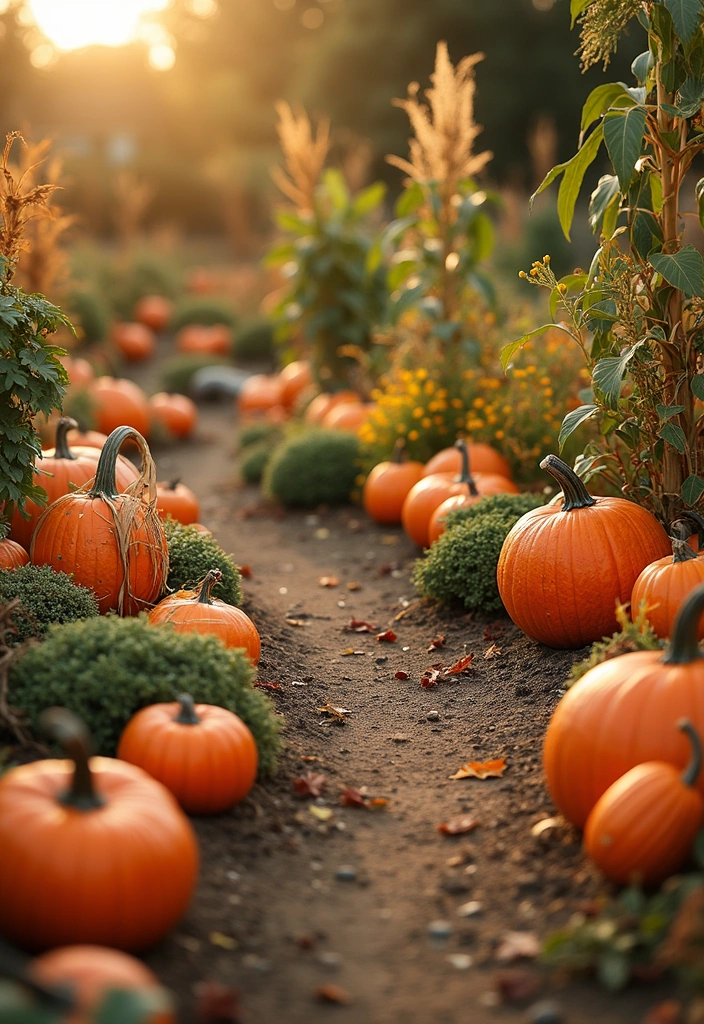
Why not bring the spirit of the harvest season into your garden design? Incorporating decorative elements like pumpkins, gourds, and corn stalks can add a festive flair.
These seasonal decorations can complement your vegetable growth while celebrating the abundance of produce.
– Arrange pumpkins in different sizes near your vegetable beds for a charming effect.
– Tie together bundles of corn stalks at the end of rows for a rustic vibe.
– Use natural materials like hay bales for seating or decoration.
This approach allows you to capture the essence of fall while making your garden unique and attractive.
8. Container Gardens: Flexibility and Style
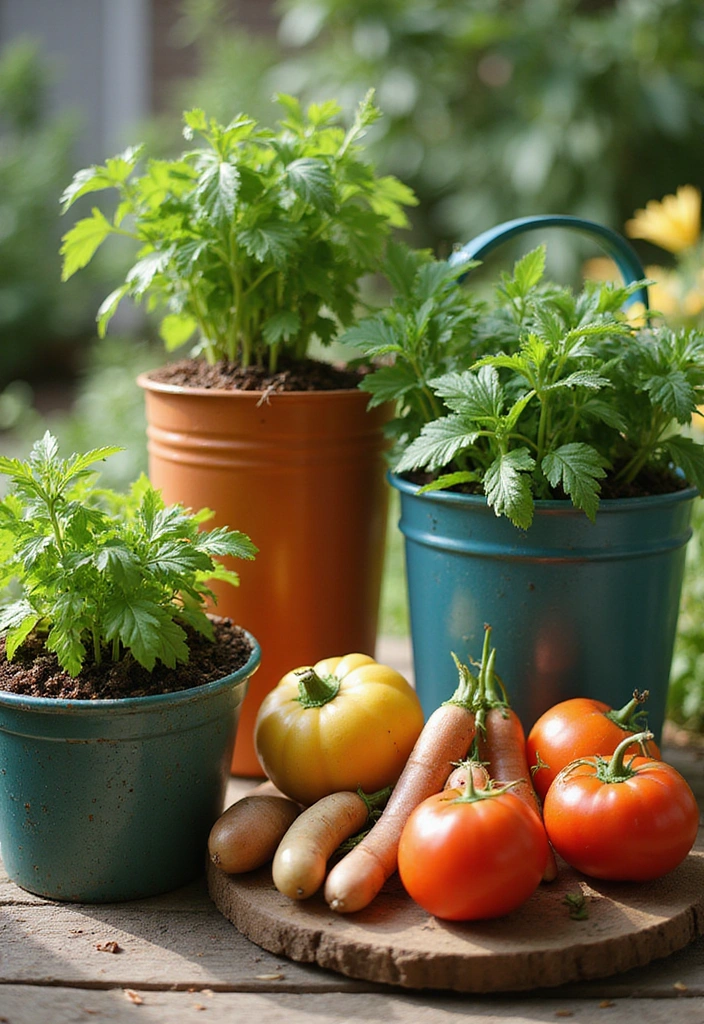
Container gardening is not just for small spaces; it’s a fantastic way to add style and flexibility to your fall vegetable garden.
Use an array of pots in different sizes and colors to create a striking arrangement that highlights your favorite vegetables.
Herbs like basil, parsley, and even compact tomato varieties thrive in containers and make for beautiful additions.
– Group pots together for a clustered look or arrange them in a line for a modern touch.
– Incorporate hanging baskets for cascading effects.
– Choose pots with good drainage to ensure plant health.
Container gardens allow for creativity, making it easy to rearrange for seasonal changes or personal preference.
9. Focal Points: Create a Centerpiece
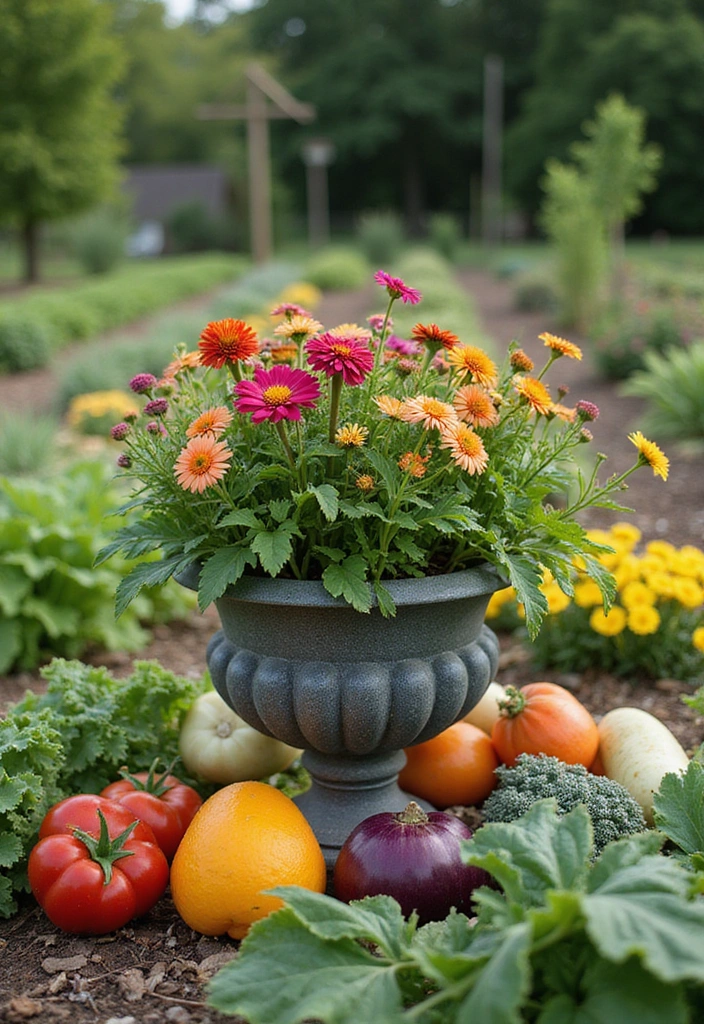
Every beautiful garden needs a focal point. This could be a unique trellis, a sculpture, or even a beautifully designed water feature.
In a fall vegetable garden, think of using a large ornamental pot filled with vibrant flowers or a striking plant like a purple cabbage as the eye-catching centerpiece.
This draws the eye and encourages exploration of the surrounding vegetable beds.
– Ensure it matches your overall garden theme for continuity.
– Surround it with colorful veggies that complement the focal point.
– Use lighting to highlight your centerpiece in the evenings.
A well-placed focal point can transform your garden into a visually unforgettable experience.
10. Seasonal Succession: Plan for Continuous Harvest
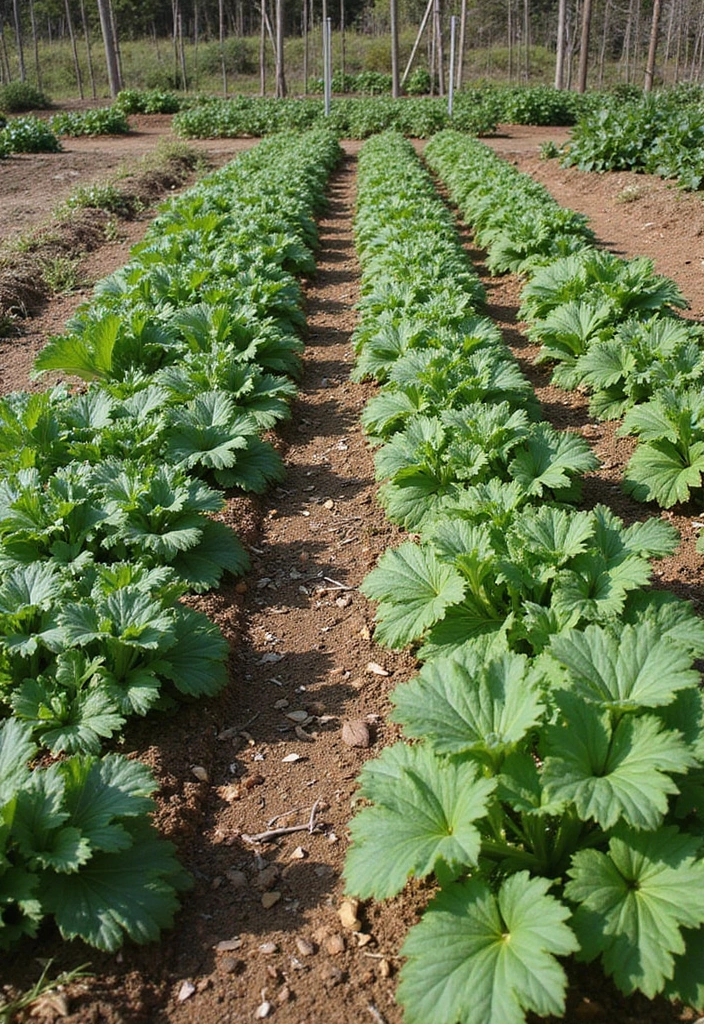
Planning your fall vegetable garden for continuous harvest means knowing which crops thrive during this season.
By choosing varieties like beets, carrots, and Brussels sprouts that flourish in cooler temperatures, you can ensure a steady supply of fresh vegetables well into winter.
Consider staggering your plantings to extend your harvest period.
– Use row covers to protect young plants from frost.
– Incorporate cover crops in your garden for soil health.
– Rotate crops each year to prevent soil depletion.
By planning ahead, your garden will remain productive and beautiful, keeping your neighbors wanting to know your secrets.
11. Luxurious Mulch: Aesthetic and Practical
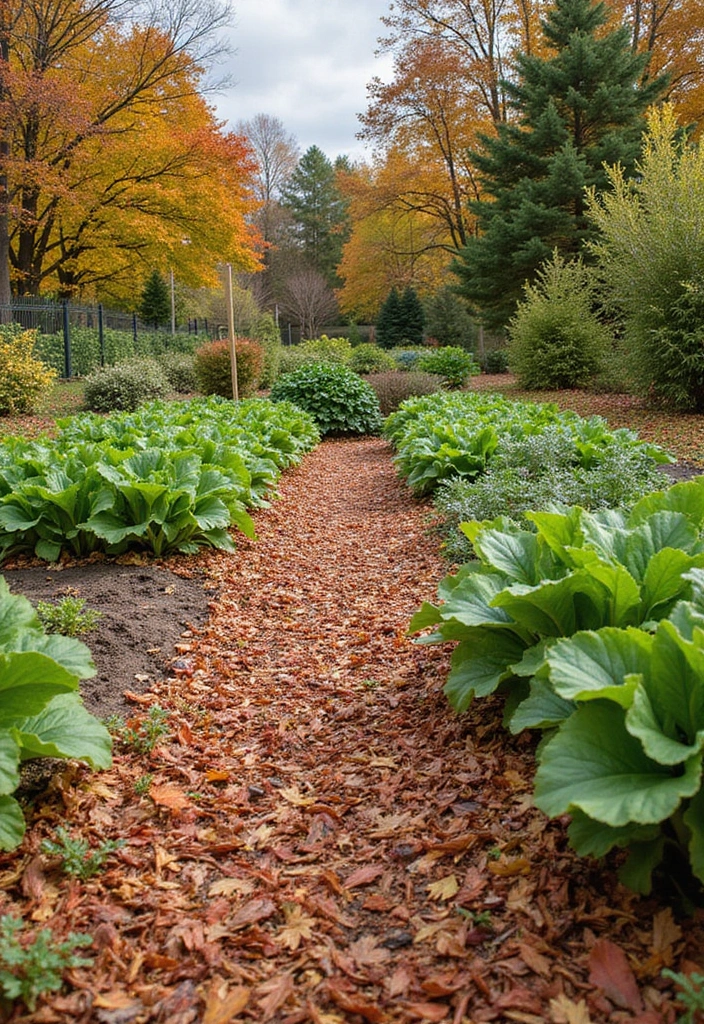
Using mulch in your garden has both aesthetic and practical benefits.
A fresh layer of organic mulch not only suppresses weeds and retains moisture but also lends a polished look to your vegetable beds.
Choose materials like shredded leaves, straw, or wood chips with appealing colors and textures.
– Mulch also breaks down over time, enriching your soil.
– Regularly replace or fluff mulch to maintain its appearance.
– Consider using mulch to outline pathways for a cohesive look.
With the right mulch, your fall garden can look well-kept while supporting healthy plant growth.
12. Artistic Plant Labels: Adding Personality
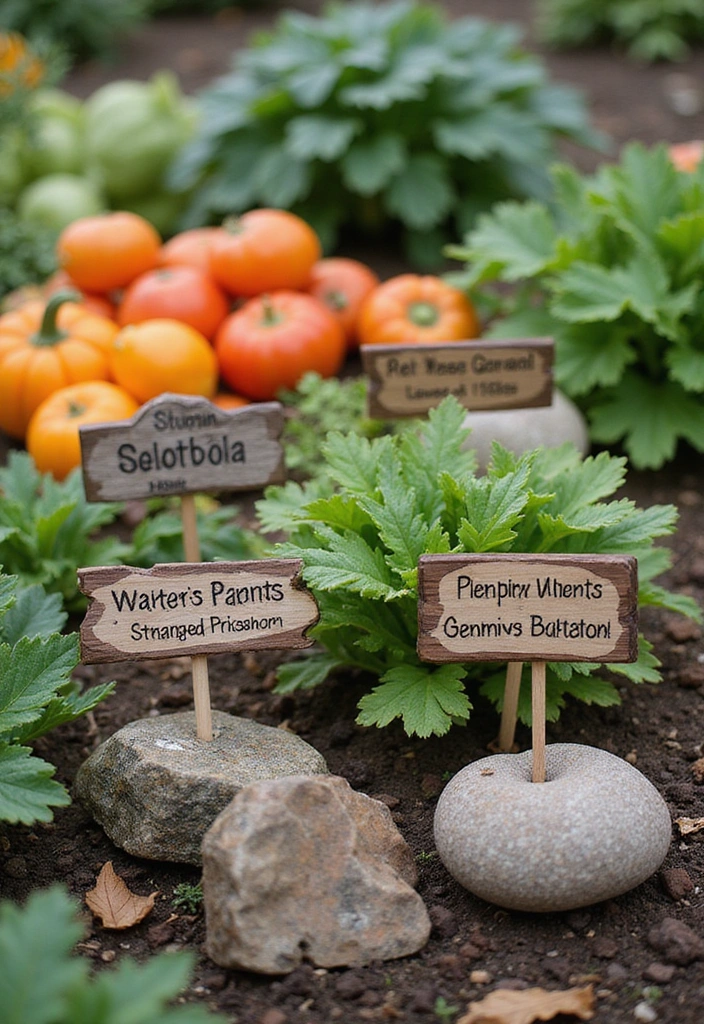
Plant labels can be both functional and decorative in your fall vegetable garden.
Instead of plain tags, consider crafting artistic labels using wood, stones, or even painted rocks.
Personalizing your labels adds a touch of charm and helps keep your garden organized.
– Use waterproof paints or markers to ensure longevity.
– Mix in whimsical designs to reflect your garden’s theme.
– Involve family or friends in creating these labels for a fun activity.
With personalized plant labels, you’ll create an organized yet whimsical atmosphere that will surely make your garden stand out.
13. Wildlife-friendly Features: Invite Nature In
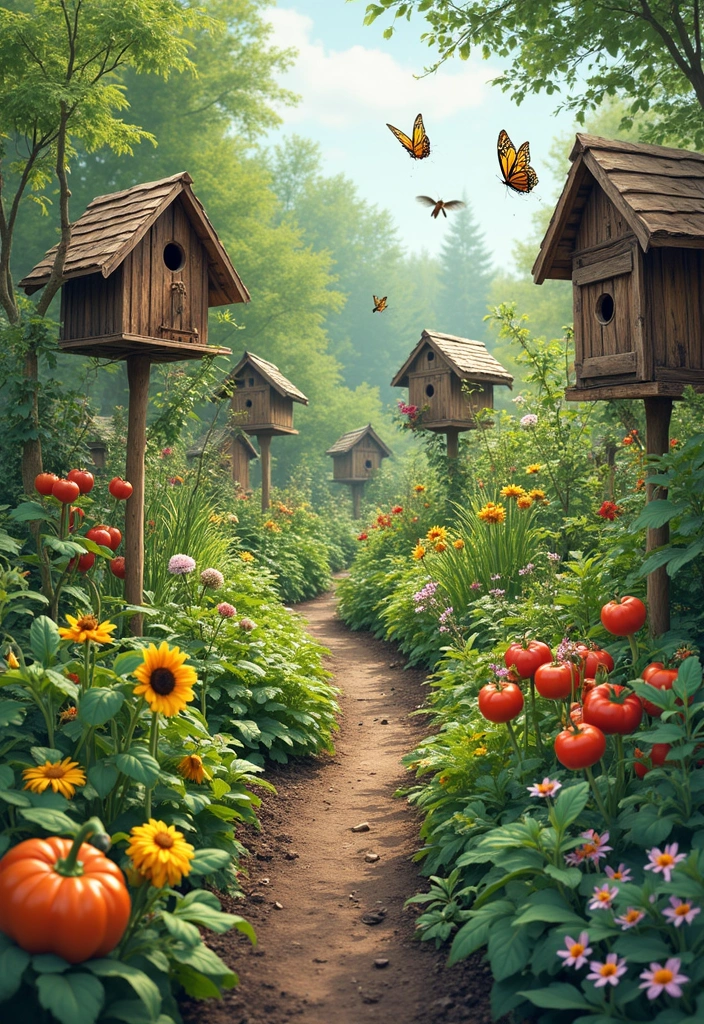
Creating a wildlife-friendly garden not only benefits the ecosystem but adds charm and life to your vegetable garden.
Incorporate features like birdhouses, bee hotels, and butterfly gardens that attract beneficial fauna.
This will add movement and vibrancy to your fall garden, making it feel alive and flourishing.
– Native plants are excellent choices for attracting local wildlife.
– A small water feature can provide hydration for birds and insects.
– Avoid pesticides to maintain a healthy habitat.
By inviting nature into your garden, you’ll create an enchanting place that’s both beautiful and ecologically sound.
14. Simple Yet Chic: Minimalist Design
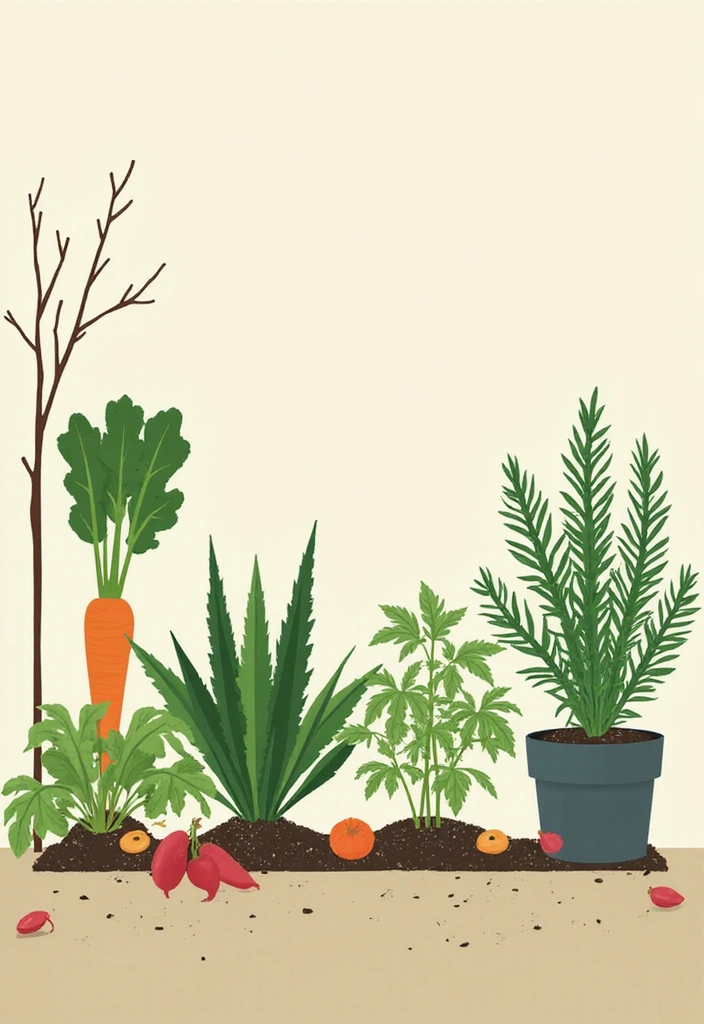
Sometimes less is more, and a minimalist vegetable garden can make a stunning statement.
Focus on a few carefully selected vegetables, using clean lines and geometric shapes to create an uncluttered look.
Arrange plants in rows or clusters to enhance the simplicity and beauty of the design.
– Use neutral or monochromatic pots to maintain a sleek aesthetic.
– Limit decorations to a few key pieces for a sophisticated touch.
– Ensure pathways are clear and defined to complement the minimalist theme.
With a minimalist approach, your fall vegetable garden can be both stylish and functional.
15. Upcycled Garden Elements: Creative Recycling
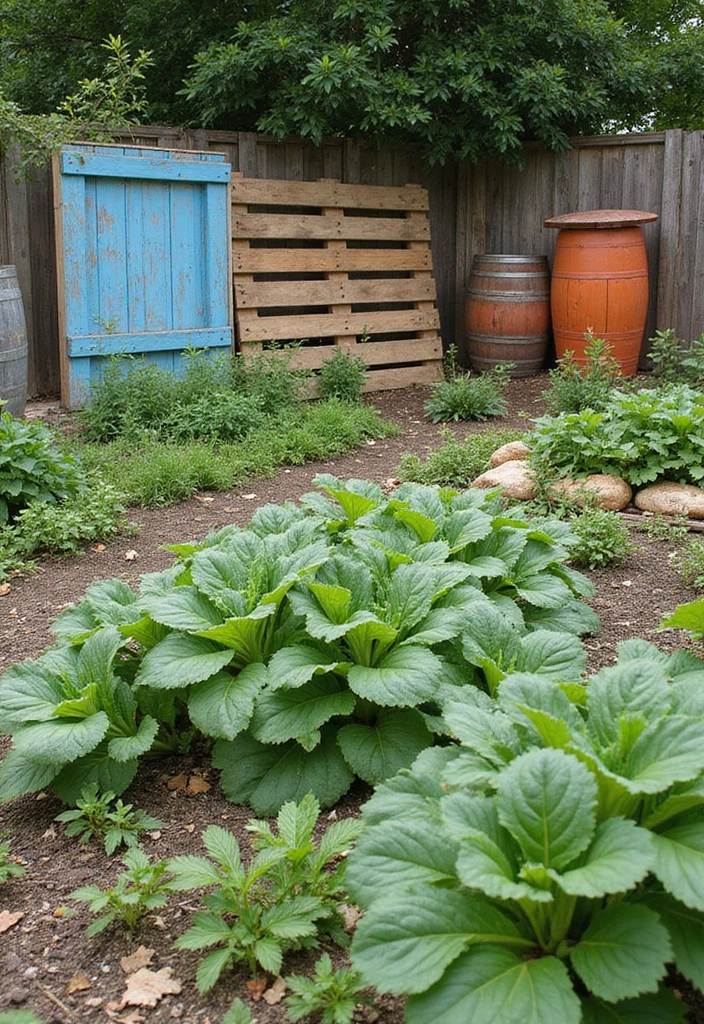
Why not get crafty with your garden by using upcycled materials?
From old wooden pallets to repurposed barrels, adding unique elements not only saves money but also boosts creativity.
You could create a planter from an old wheelbarrow or use wine crates for tiered vegetable beds.
– Regularly scouting local yard sales can reveal hidden treasures for your garden.
– Paint upcycled items in bright colors to add whimsy.
– Remember to ensure that any repurposed containers are safe for growing edibles.
An upcycled garden helps the environment and gives your fall garden a distinct personality, leaving bystanders curious about your creative process.
16. Seasonal Transition: Preparing for Winter
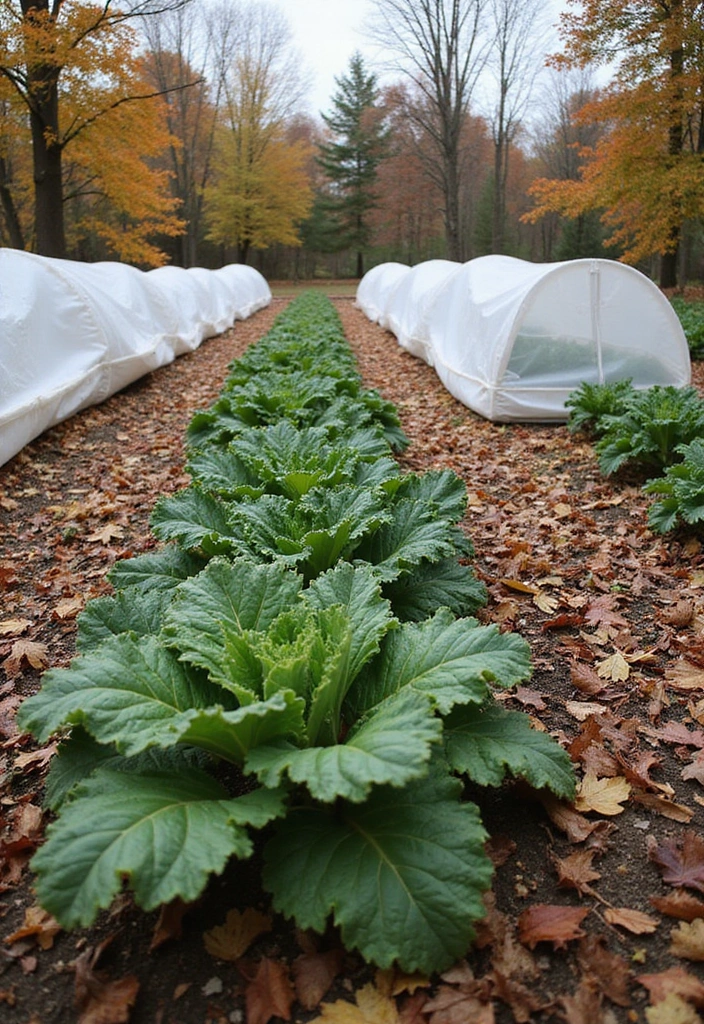
As fall comes to a close, preparing your vegetable garden for winter can be both aesthetic and practical.
Using row covers, cold frames, or even hoop houses can extend your growing season and keep your plants healthy.
Incorporating winter-friendly plants like kale or garlic can ensure a productive garden even in the colder months.
– Plan a winter garden layout that includes crop rotation for the next season.
– Clean up debris to prevent pests and disease.
– Consider planting cover crops to improve soil health over winter.
By transitioning your garden effectively, you’ll ensure that it remains beautiful and productive, making it a joy to look at throughout the winter months.
Conclusion: Your Dream Fall Vegetable Garden Awaits!
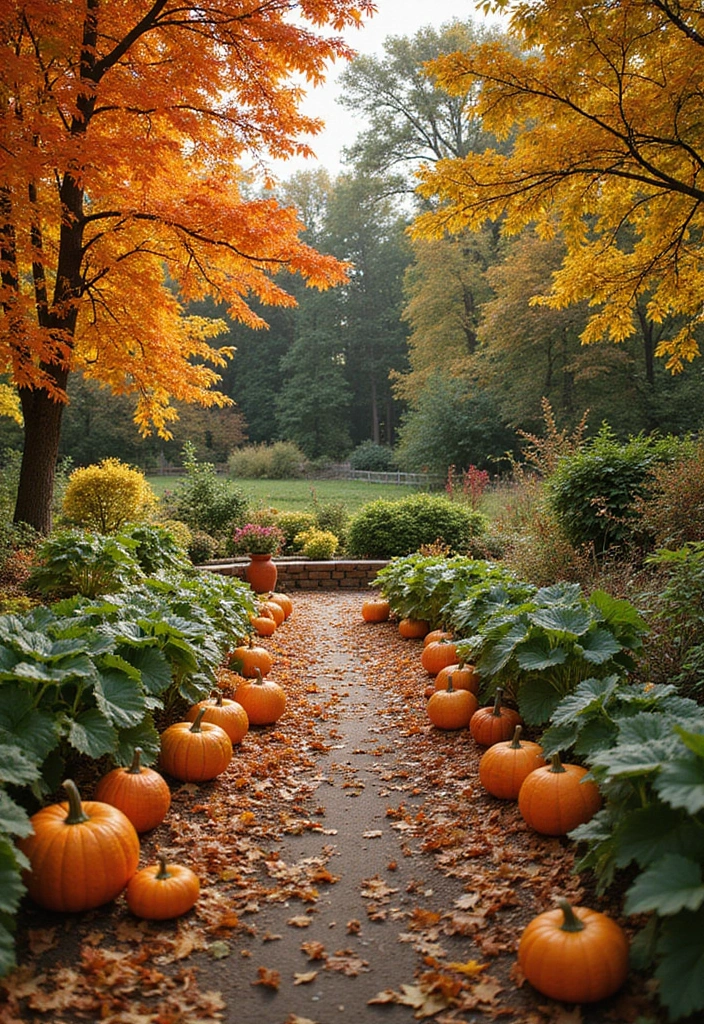
Creating a stunning fall vegetable garden is all about blending aesthetics with functionality.
No matter which design ideas resonate with you, there’s something uniquely fulfilling about growing your own food and beautifying your space.
As you embark on your gardening journey this season, don’t forget to let your creativity shine and enjoy the process—there’s nothing more rewarding than a garden that brings joy to you and envy to your neighbors.

